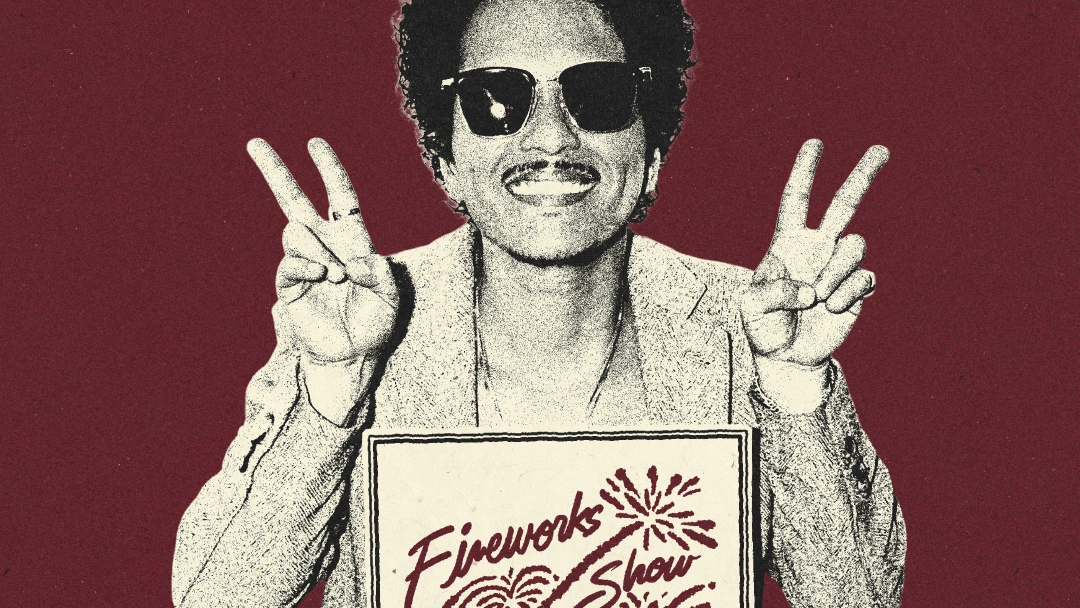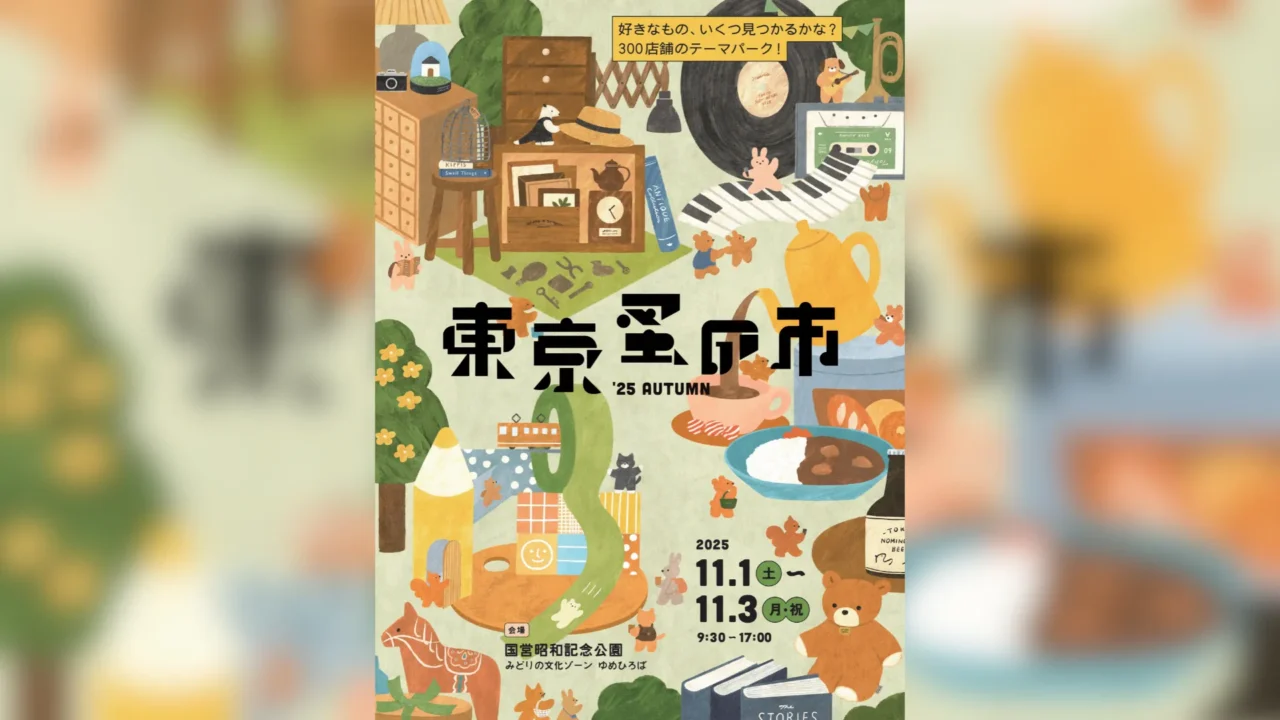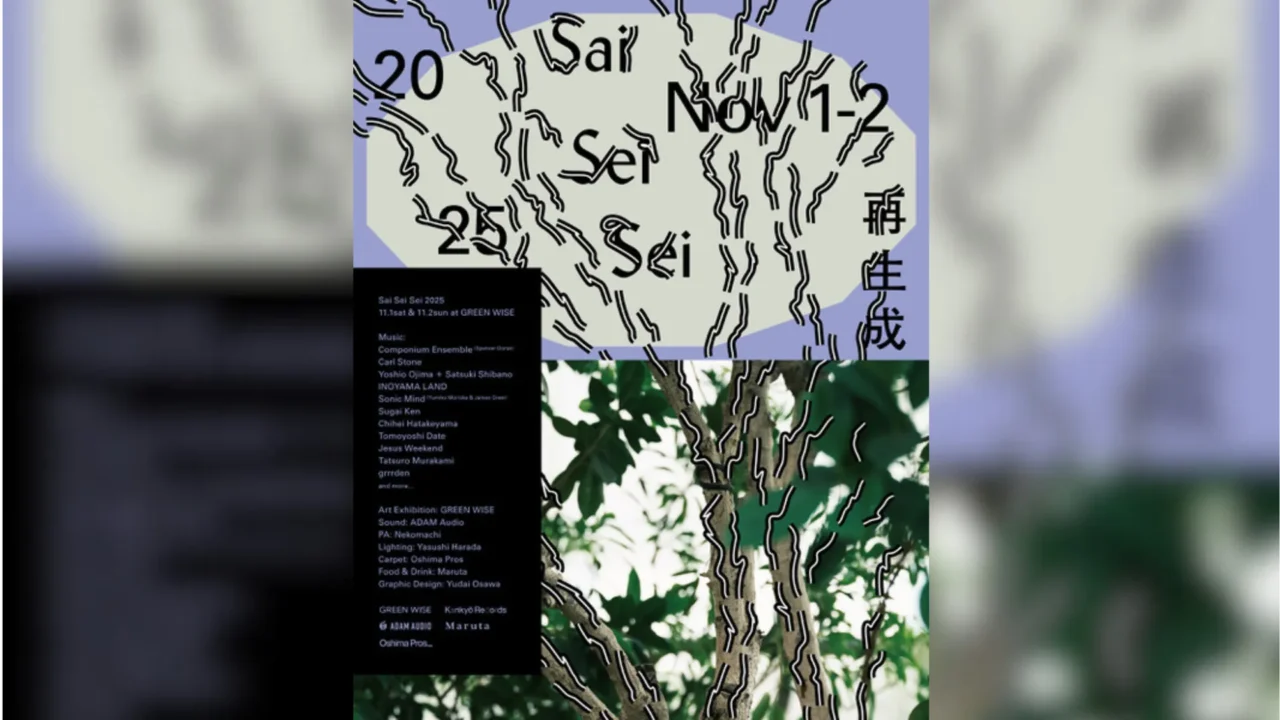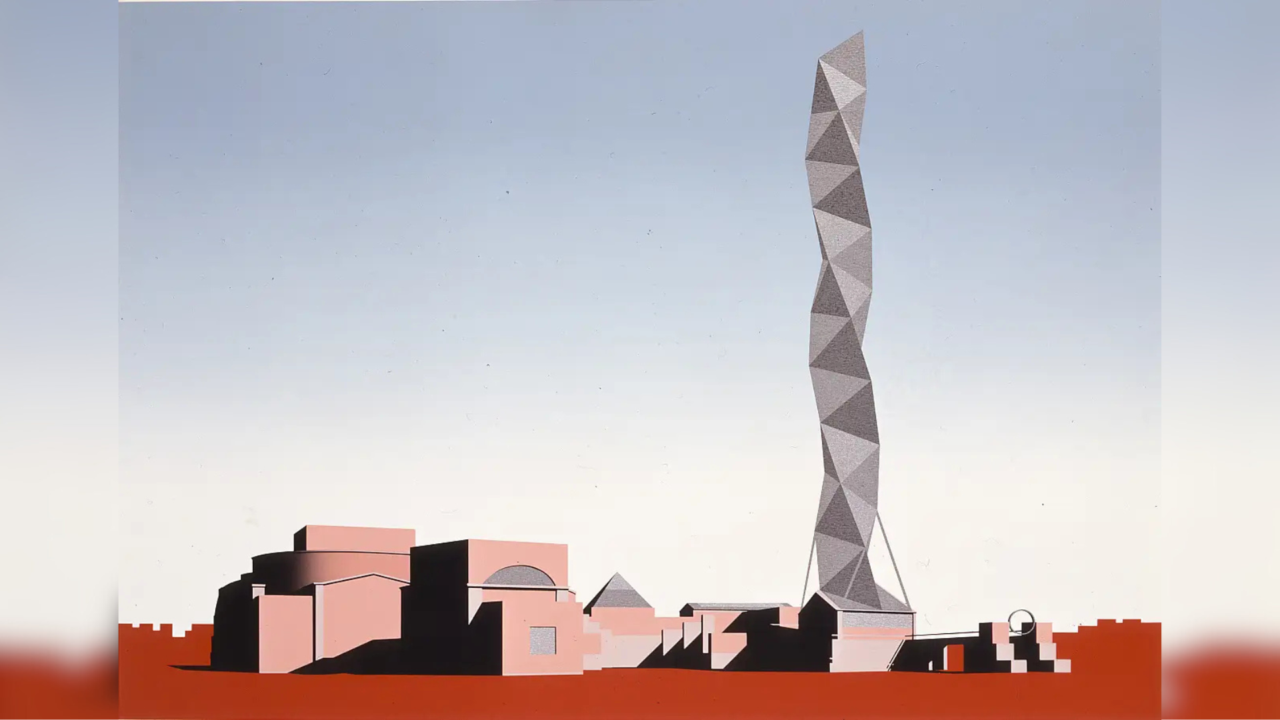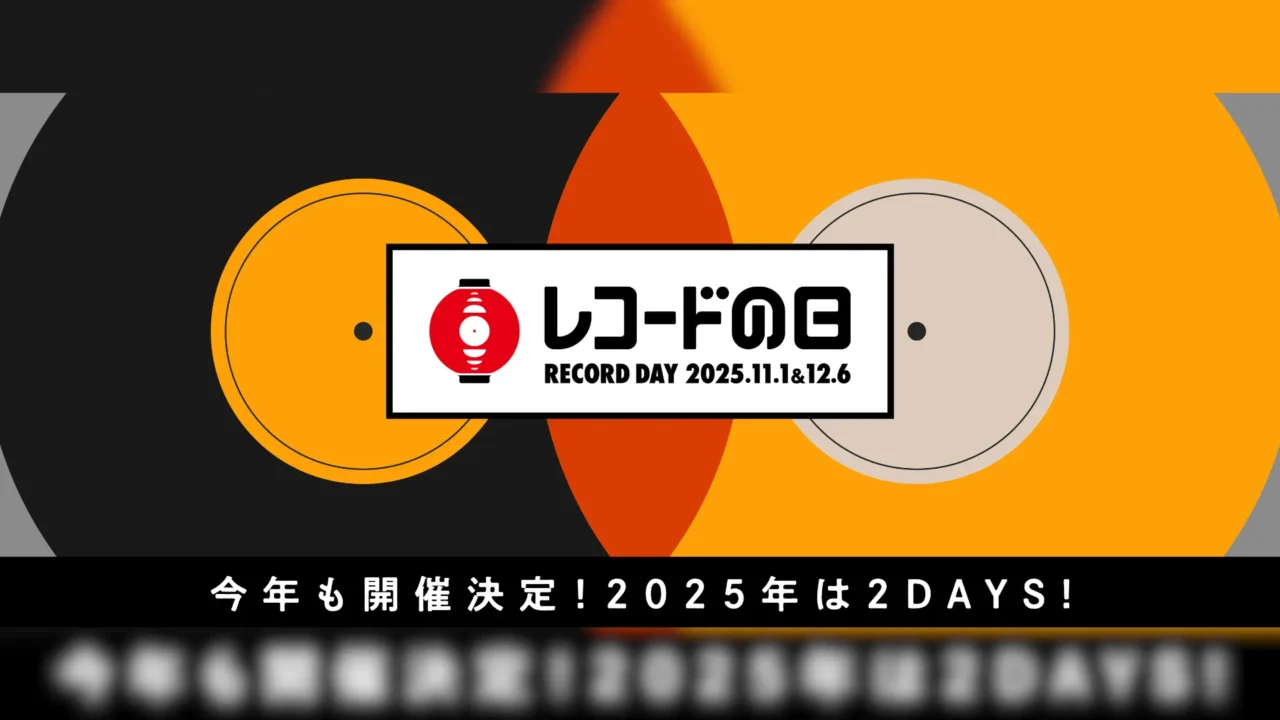INDEX
To truly empathize with others without appearing spineless, one must have a distinctive rhythm.
George Clinton
For me, the truly invaluable people are the ones who are utterly insane—those who live passionately, speak fervently, and yearn for salvation. They crave everything, never show boredom, and never utter anything mundane. They burn fiercely, like dazzling yellow fireworks, exploding and spreading like a spider weaving among the stars, glowing blue at the center, prompting everyone to exclaim, ‘Ah!’ That’s who they are.
Jack Kerouac
My First Time in Tomakomai
I just returned from my first-ever trip to Tomakomai, which was a two-day, one-night research adventure. As a proud native of Hokkaido, it’s surprising to admit that I had never set foot in Tomakomai before. While some might find that hard to believe, it’s not unusual for Hokkaido residents. Given that Hokkaido accounts for over 20% of Japan’s land area, it’s rare to find someone who has visited every nook and cranny of this vast island. Many locals have places they haven’t been to.
The regional variations in Hokkaido are astounding. For instance, if people from Sapporo spot a deer or a fox in the city, they might get a little excited, while those from Obihiro or Asahikawa might simply shrug it off. Wakkanai residents might not react at all! The differences extend to temperature, climate, and even dialects, making Hokkaido feel almost like a separate “country.” The range of these differences is remarkable, and it’s not just due to the vastness of the land; the fact that nearly everyone here is an immigrant plays a big role in that.
Anyway, this was my first-ever experience in Tomakomai, and to cut to the chase, it was an absolute blast—ridiculously fun! I often found myself wondering, “Is it really okay for this to be my job?” Each time, I happily reassured myself with, “Of course it is!” I’d like to recount the entire experience here.
I arrived at New Chitose Airport around 1 PM, and my first thought was, “What kind of research are we doing today?” I had only been informed that I would be “researching in Tomakomai,” and I had no idea what would happen after I landed. I contemplated whether I should just start enjoying some Sapporo Classic (an incredibly delicious beer exclusive to Hokkaido) when Kato-kun came to pick me up. I hopped in the car and asked, “So, what kind of research are we doing today?” Kato-kun replied, “It’s a city exploration shoot where we’ll visit my favorite spots in Tomakomai. The goal is to showcase the city’s charms.”
“So basically, it’ll end up being a drinking and walking tour?”
“Exactly!”
Sounds perfect to me

A soulful writer, tension critic, and professional playboy. His self-published magazine T.M.I., released in 2022 and 2023, achieved a historic small hit. In addition to his role as a storyteller for the R&B band Young Love, he is also active in the neo-kamishibai unit Pegasus-dan.
INDEX
Lake Utonai
The first place I visited was Lake Utunai. It is a nationally designated wildlife protection area and is registered as a Ramsar wetland, making it quite a famous lake. It was pretty large, but I heard that its depth is only about knee-high.
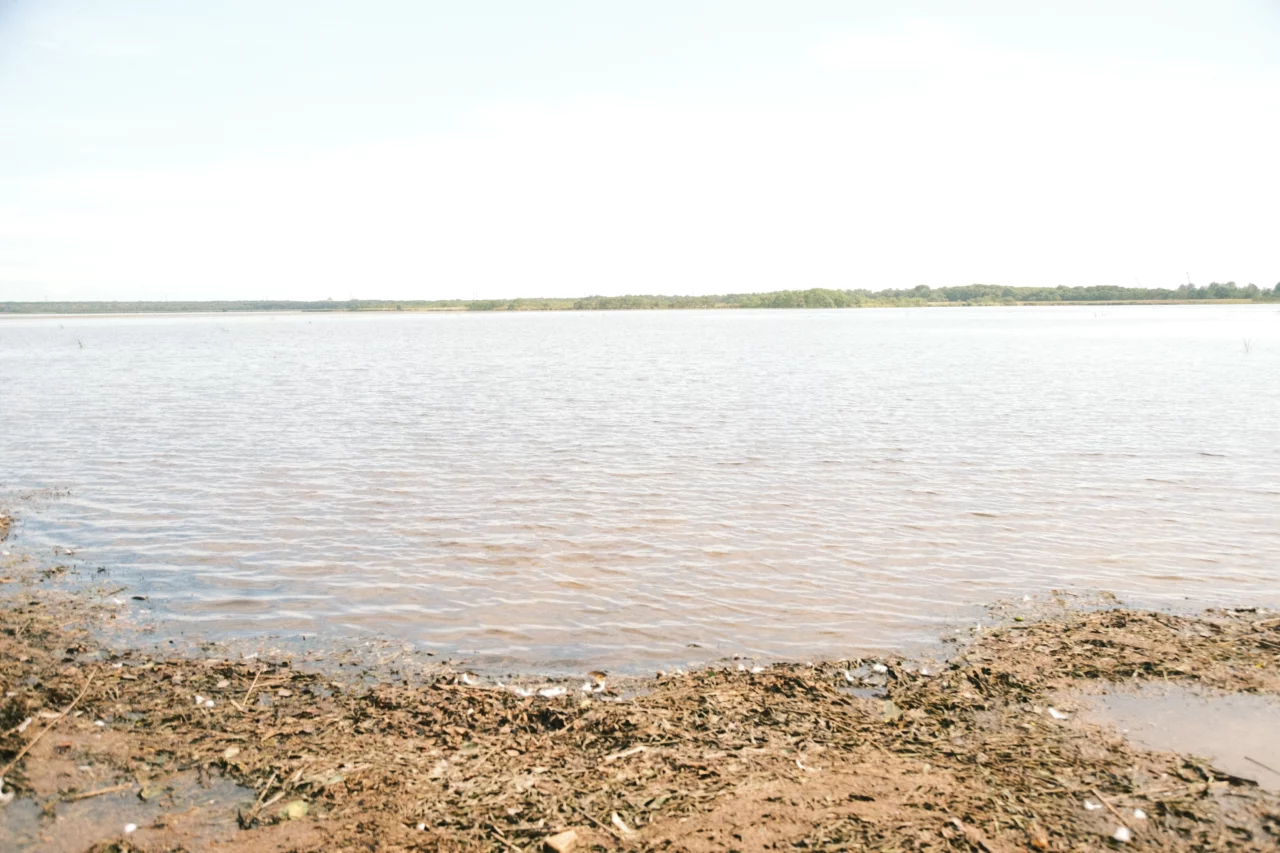
As expected from a Ramsar site, there were a ton of birds everywhere. There was even a sign warning people about the swan droppings scattered all around. While staring closely at the droppings, Kato-kun said, “Hmm, for a bird, that’s some pretty decent poop. It looks kind of human-like.” Before long, we actually encountered a swan. It seemed incredibly accustomed to humans, completely ignoring us and just munching away on the clover growing on the grass.
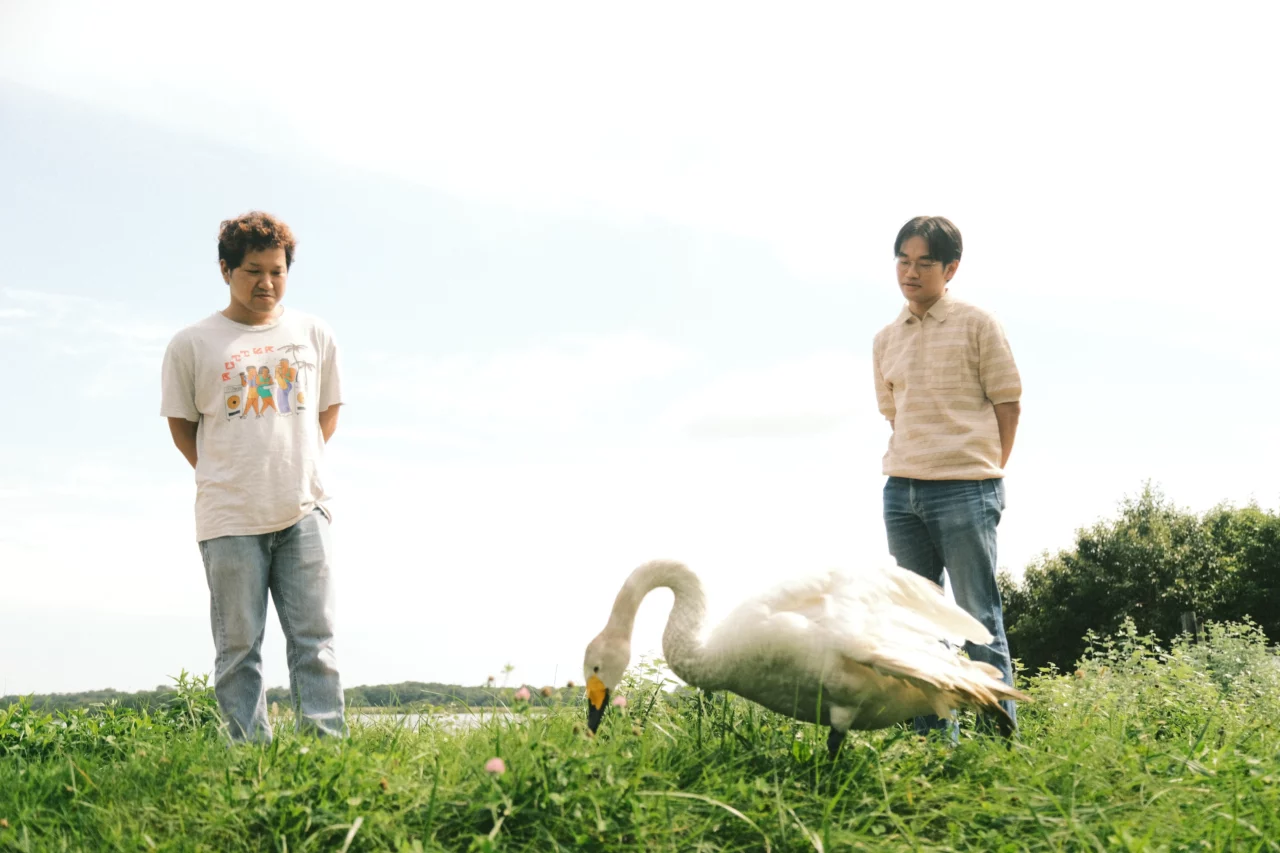
After that, we strolled around the area and chatted about various rumors, like how Tsuyoshi Nagabuchi has a training room in his studio and how Tsuyoshi Domoto reportedly places stones on top of his amplifier, before getting back into the car.
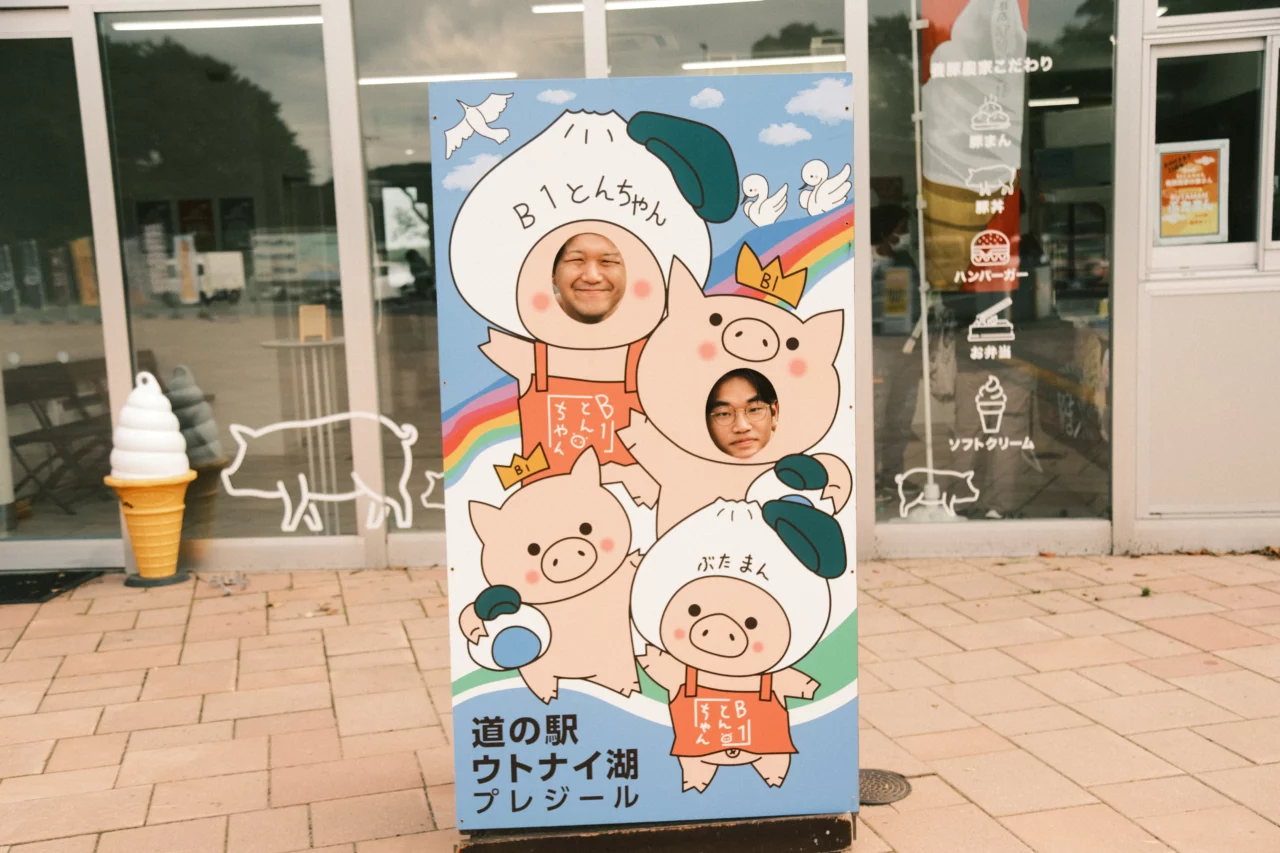
INDEX
Tomakomai Civic Hall
Our next stop was the Tomakomai Civic Hall, which serves as the venue for “FAHDAY.” Built in 1968, this storied building boasts a symmetrical design and depth, with patterns on the walls and shapes of the windows that evoke a faint sci-fi ambiance, similar to that of ‘Star Trek.’

The acoustics of the large hall, which can accommodate 1,400 people, are said to be fantastic, and it has hosted artists like Eikichi Yazawa and Tatsuro Yamashita. While I’m not familiar with Yazawa, Yamashita is known for his high standards regarding venue sound quality. The fact that he has consistently refused to perform at Budokan due to poor sound suggests that the acoustics here must be excellent. Due to aging, the hall is scheduled for demolition, making “FAHDAY” its final event. As we wandered aimlessly around the parking lot, Kato shared the backstory of how this venue was chosen for “FAHDAY” and his feelings surrounding it. His account was quite intense and complex, prompting me to exclaim “Wow” multiple times. Each time, Kato responded with a wry smile, saying, “It’s pretty crazy, isn’t it?” He added, “Having a clear enemy makes the fight worthwhile.”

NOT WONK / SADFRANK. Born in 1994 in Tomakomai City, he is a musician currently residing in the same city. In 2010, while still in high school, he formed the rock band NOT WONK. Since 2015, he has released a total of four albums through KiliKiliVilla and Avex Entertainment. He also released an album in 2022 under his solo project, SADFRANK. Kato is actively involved in art direction for many of his works.
INDEX
ELLCUBE (Live music venue)
After that, we made our way to ELLCUBE, the only live house in Tomakomai. As we arrived, we found the staff busy cleaning up after the outdoor music festival “Kassei no Hi,” which had wrapped up just the day before. They looked a bit worn out, but we managed to sneak a peek inside. The floor and stage were quite spacious, and I learned that they once accommodated 368 people during an event organized by NOT WONK. The venue had a unique charm about it, and Kato mentioned, “I believe this is the best-sounding venue in Hokkaido.”
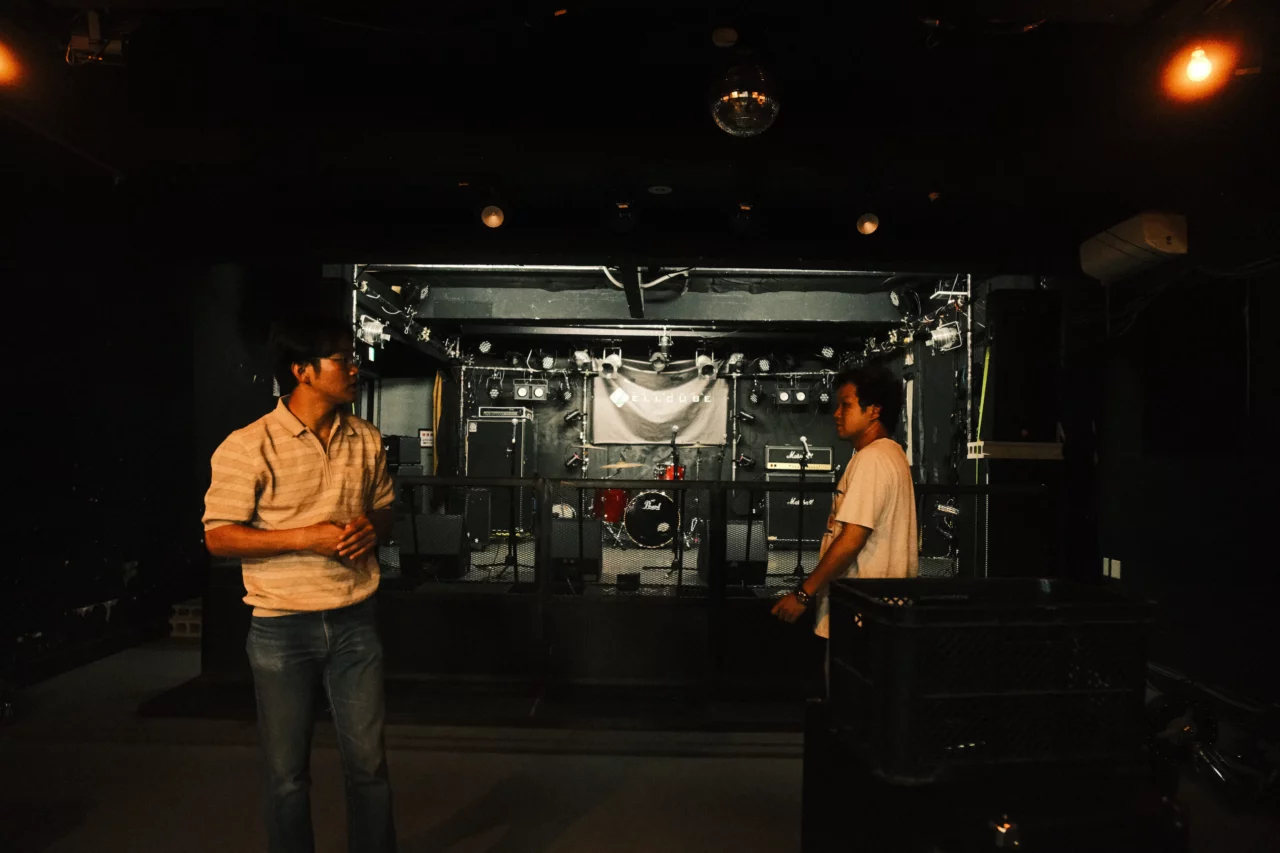

INDEX
Tomakomai Central Park
As we headed to Tomakomai Central Park, where “Kassei no Hi” was taking place, we found the cleanup operations in full swing. This festival is said to be one of the largest in Hokkaido, running for eight continuous hours over two days across four venues, and it’s completely free to attend. Last year, it attracted 18,000 visitors, which is impressive. Such numbers would be unimaginable even in a million-strong city like Sapporo. Could it be that Tomakomai has a unique environment that fosters the pursuit of independence and success in the arts?
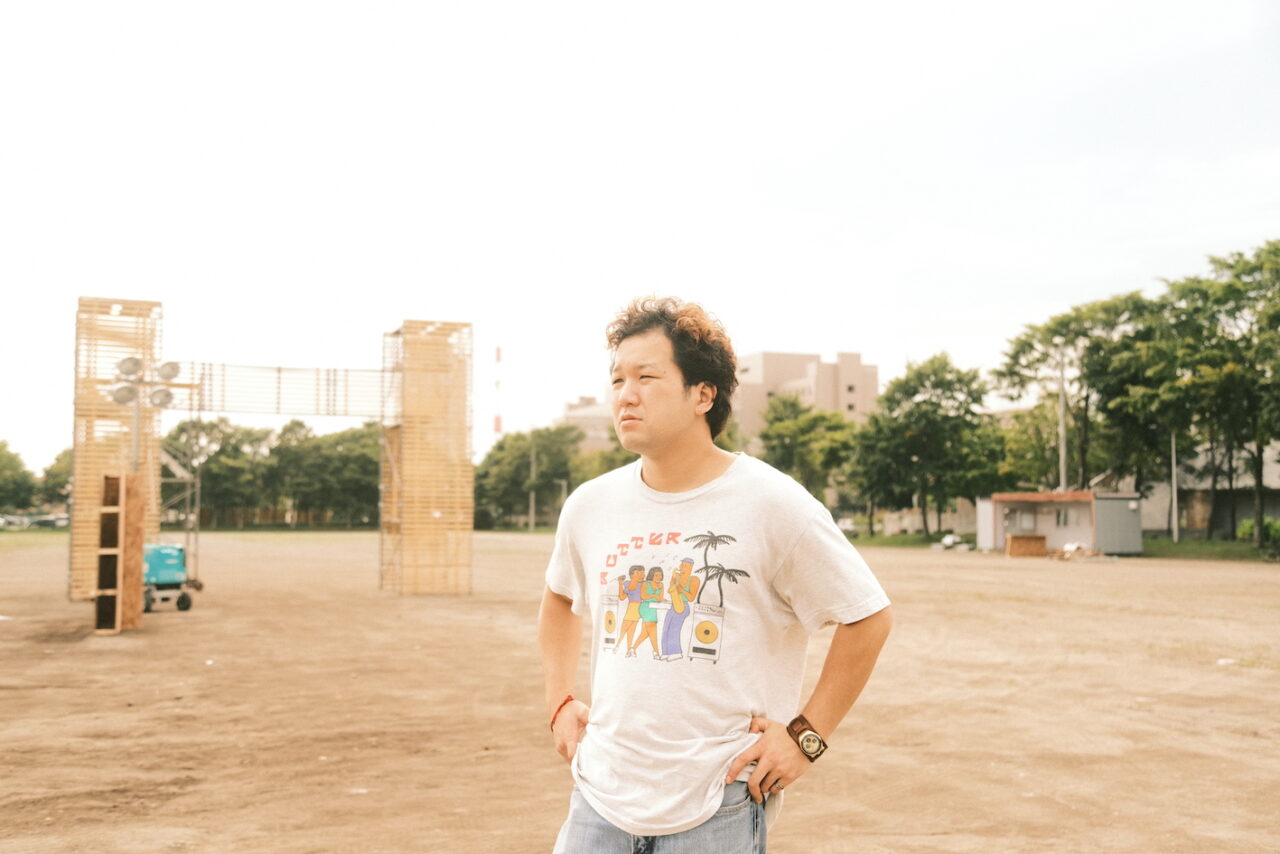


INDEX
ouchi-coffee (cafe)
It was already past 3 PM. We figured it was a good time for a coffee break, so we headed to “Ouchi Coffee,” Kato’s go-to café. As the photos show, it was a beautifully stylish space that made me say, “Wow, this place is so cool! I’m really jealous.” Kato grinned proudly and replied, “This is my favorite spot.”
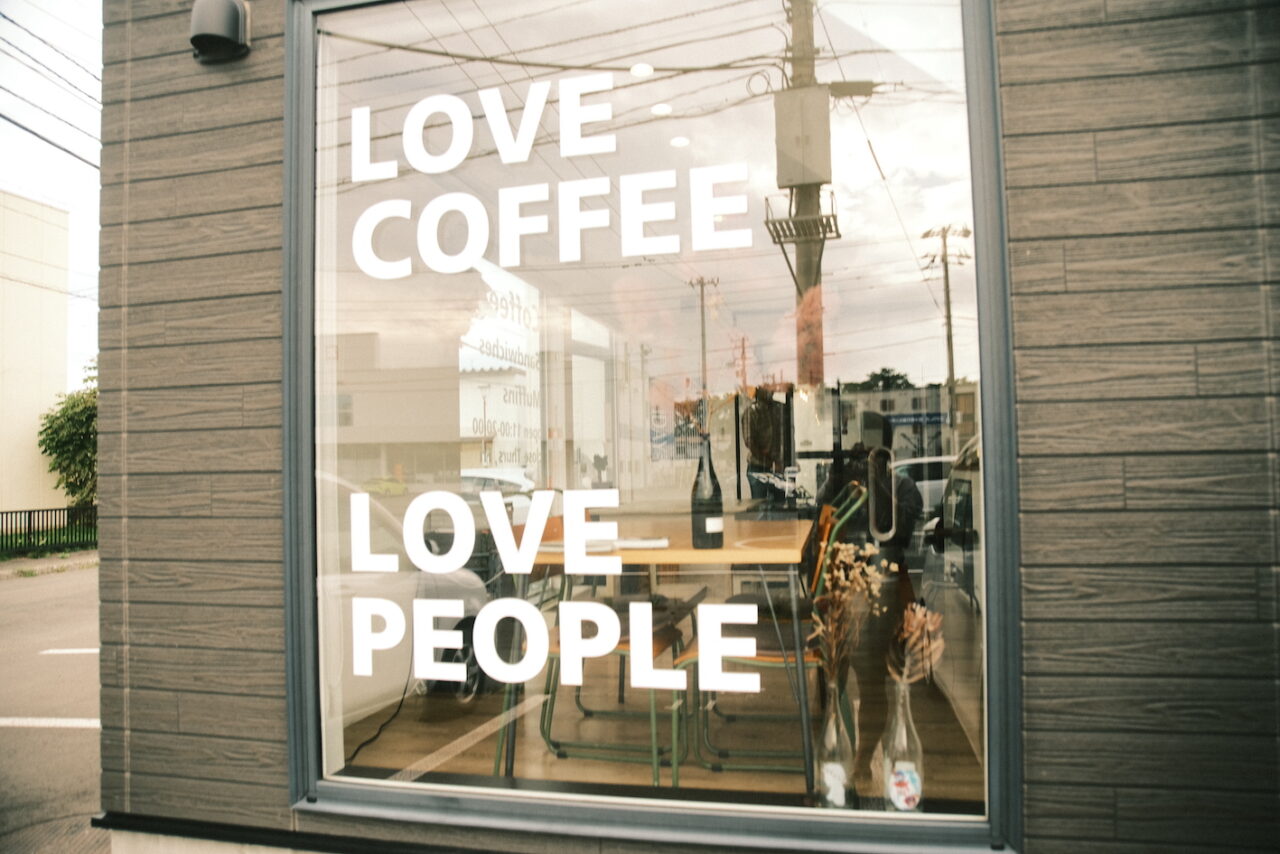
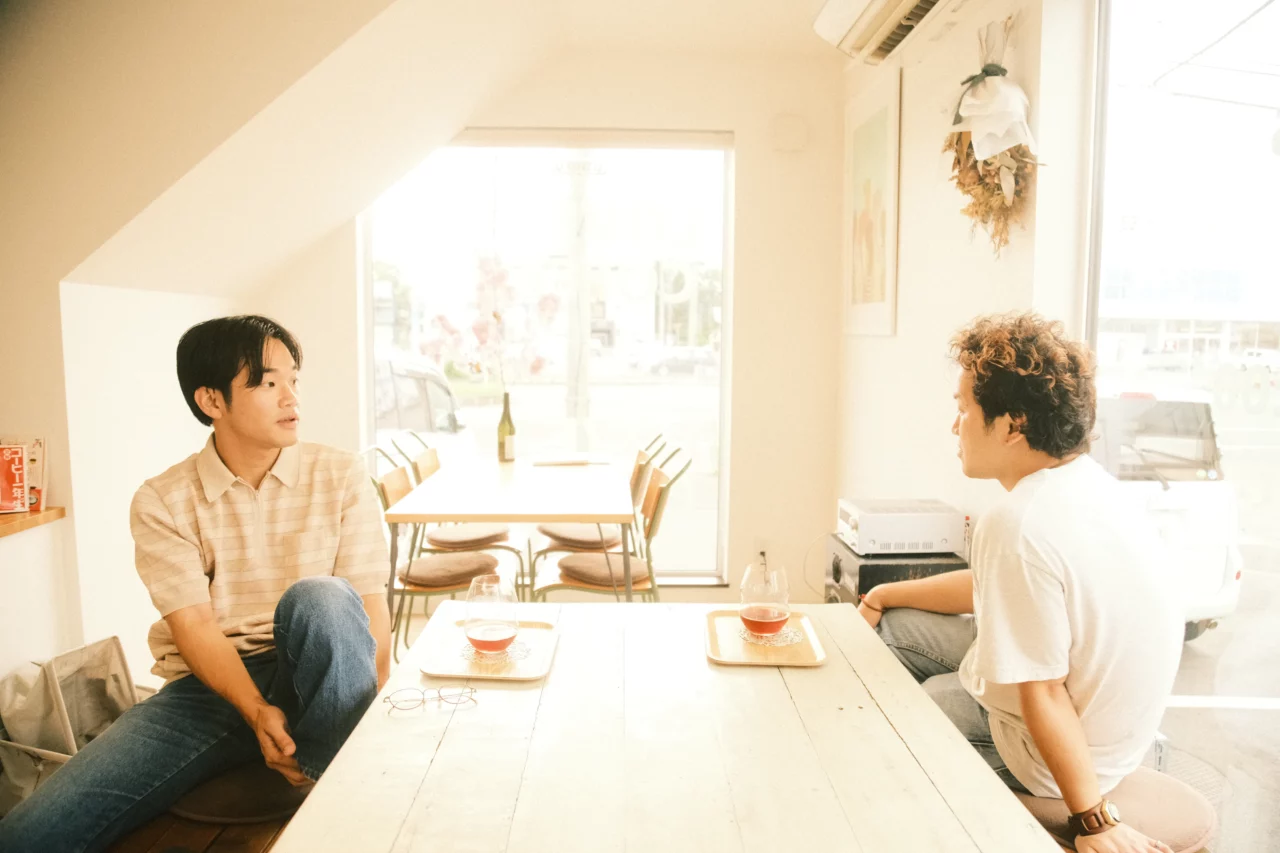
The coffee brewed by the owner, Reimi, was absolutely delicious. The Salvadoran coffee had a rich, wine-like flavor, while the Colombian red plum coffee offered a vibrant taste reminiscent of tropical fruit tea. At Ouchi Coffee, there were notes detailing the characteristics of each coffee posted on the counter. One note read, “It’s the long-awaited roast from Leaves Coffee! It’s amazing! The volume is impressive right from the start. There’s so much information to take in. The aroma, flavor, texture, and colors all come rushing in, and the aftertaste is incredibly strong!”
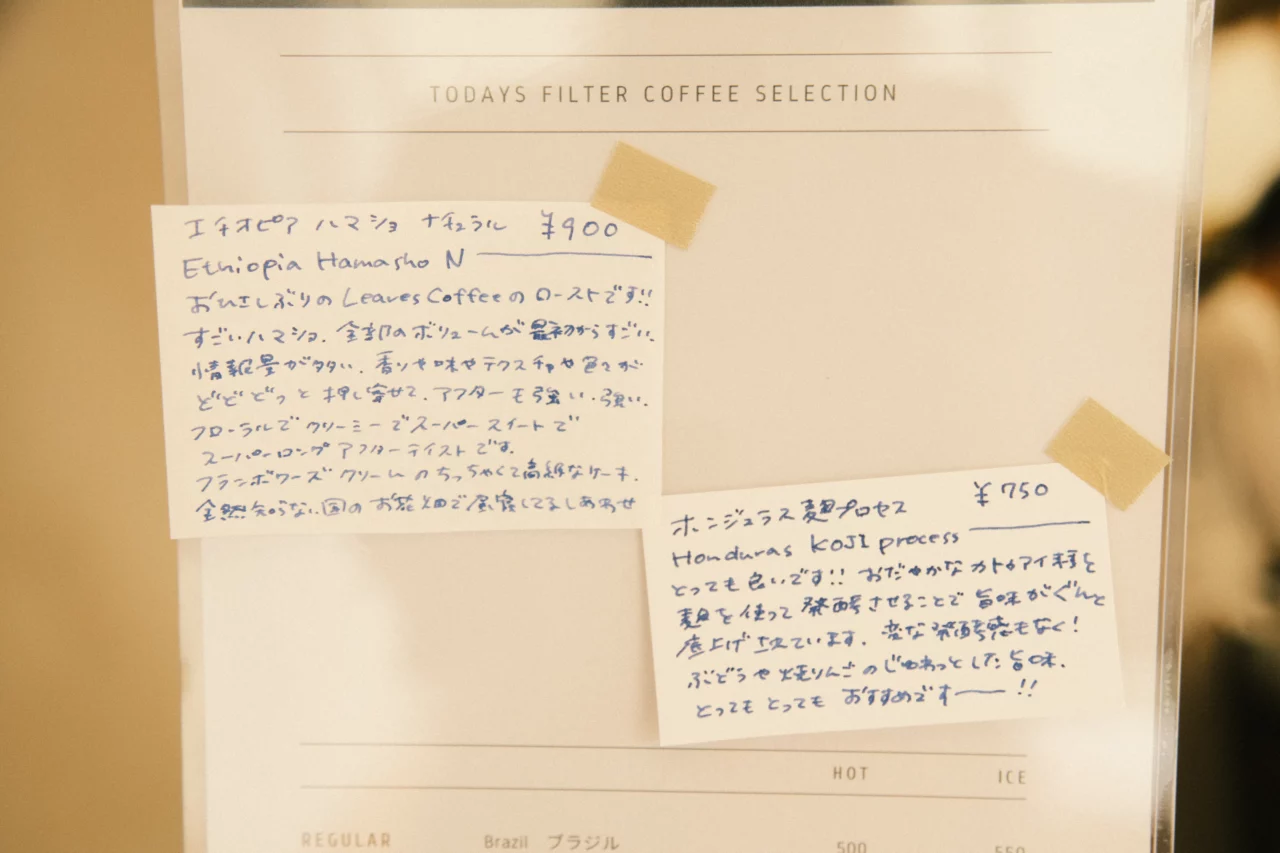
As I listened intently, Reimi smiled and shared her thoughts.
“Describing flavors can be quite tricky. I want to convey specifics, like ‘it’s fruity, and the aroma is this,’ but when I try, I feel like I’m drifting further away from the actual taste. I once wrote about the ‘taste of a car driven by a girl.’”
“Oh, I can sort of picture that. Like a black BB parked outside a late-night Don Quijote, with a marijuana-shaped air freshener hanging from the rearview mirror.”
“I thought it was a decent description, but my friends reacted with, ‘What does that even mean!?’”
“Using imagery is a handy way to communicate, but you really have to trust the recipient’s senses for it to resonate, right?”

INDEX
CINEMA TAURUS
After that, we took a stroll through the shopping district in the evening. As we walked, Kato pointed out various places, mentioning that the ramen shop tends to attract a lot of delinquents but serves great food, that the sushi place is a popular spot, and that there’s a bar… He knows a ton of delicious restaurants and interesting spots. He became familiar with them while attending bands that came to perform in Tomakomai. Although I’m from a city in Hokkaido and have lived there for 30 years, I hardly know any great places to eat or fun spots.
We continued our exploration by visiting the Tomakomai Central Bowl, which boasts a 50-year history. The CINEMA TAURUS on the first floor is what you would call a mini-theater, and from the posters, it has an impressive lineup of films. The selection is quite stylish, something you wouldn’t typically find in a cinema in a regional city. Kato mentioned, “I watched ‘Summer of Soul’ here,” which highlights the quality offerings that Tomakomai has to offer. The Central Bowl itself has a rich, old-school atmosphere, and local bands even use it for filming. We also went to check out the wall of an apartment building that was used in the filming of “Your Name.” On the concrete wall, painted white, the faint remnants of the words “Yo” and “Na” could still be seen.

INDEX
Tachinomi King (izakaya)
As twilight approached, we figured it was the perfect time to grab a drink, so we made our way to an izakaya called Tachinomi King. The owner, Takunori Kaneda, plays bass for the band Hige Gakudan, and outside, there was an incredibly stylish classic Nissan car that had me thinking, “This place is already pretty cool.” Upon stepping inside, I realized that the vibe matched the exterior.

The decor is both simple and striking, exuding a rugged charm that feels wonderfully unpretentious. As I enjoyed a chilled draft beer, I struck up a conversation with Kaneda, the bassist of the band Hige Gakudan. Despite his tough appearance, he was approachable and kind, and we discussed a variety of topics. While watching “Dosanko Wide,” a local variety show known to all Hokkaido residents, an advertisement for a festival in Tomakomai next week caught our attention. We remarked, “Wow, that must have cost a fortune,” and “Yeah, it really comes down to the promotion,” as we sipped our beers.
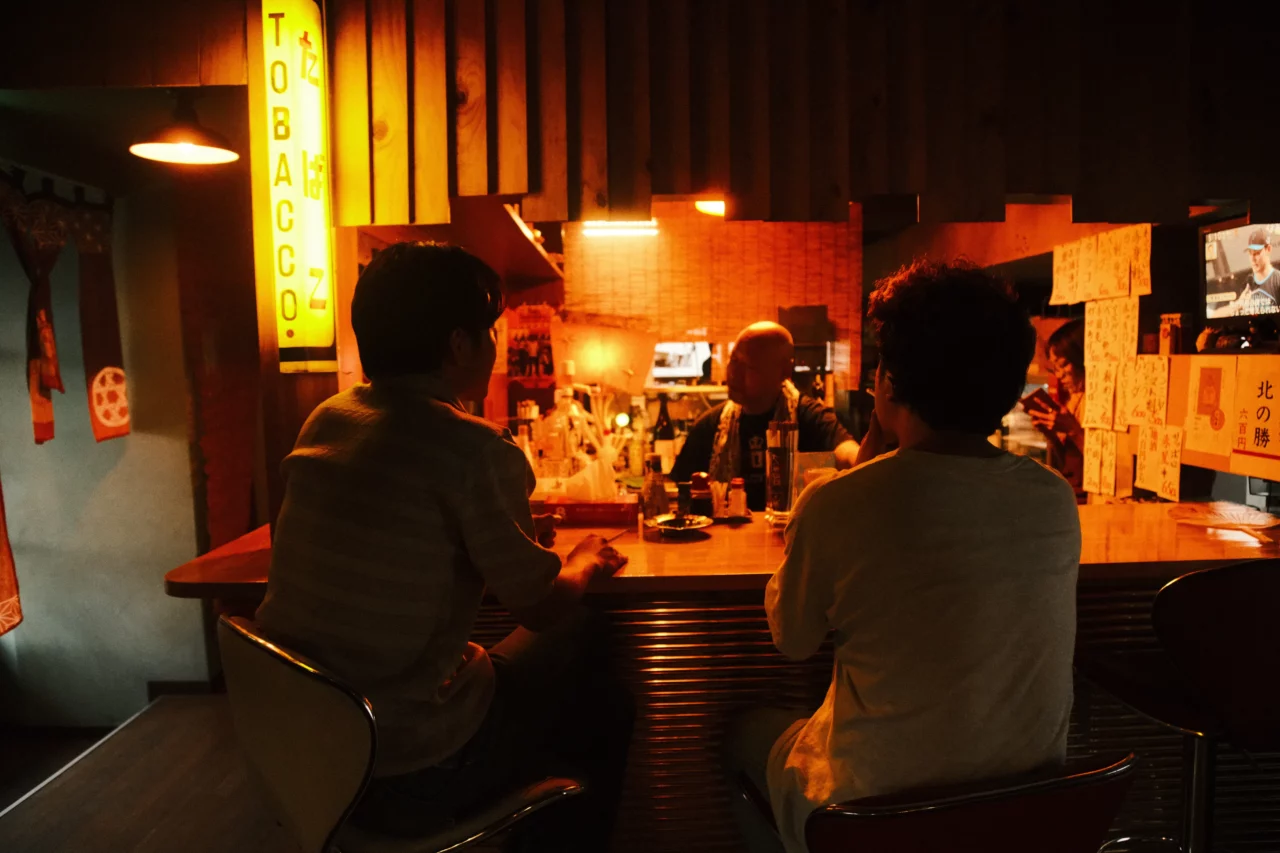
INDEX
Bar Old
Then, we thought it was time to get something to eat and made our way to Bar Old. On the way, we ran into a band member named Shion, who was on his way to Sapporo to record at a studio. I wished him luck and waved goodbye.
Bar Old is a genuine live venue with a DJ booth and a stage for acoustic performances, but the food was just as impressive. I enjoyed Shizuoka-style oden and vegan mixed noodles. The black fish cake topped with dashi powder was fantastic, and the mixed noodles, which could be enhanced with raw vinegar, had a delightful texture, with slightly firm noodles that complemented the pumpkin and shungiku perfectly. I finished everything in no time, my taste buds celebrating each bite.

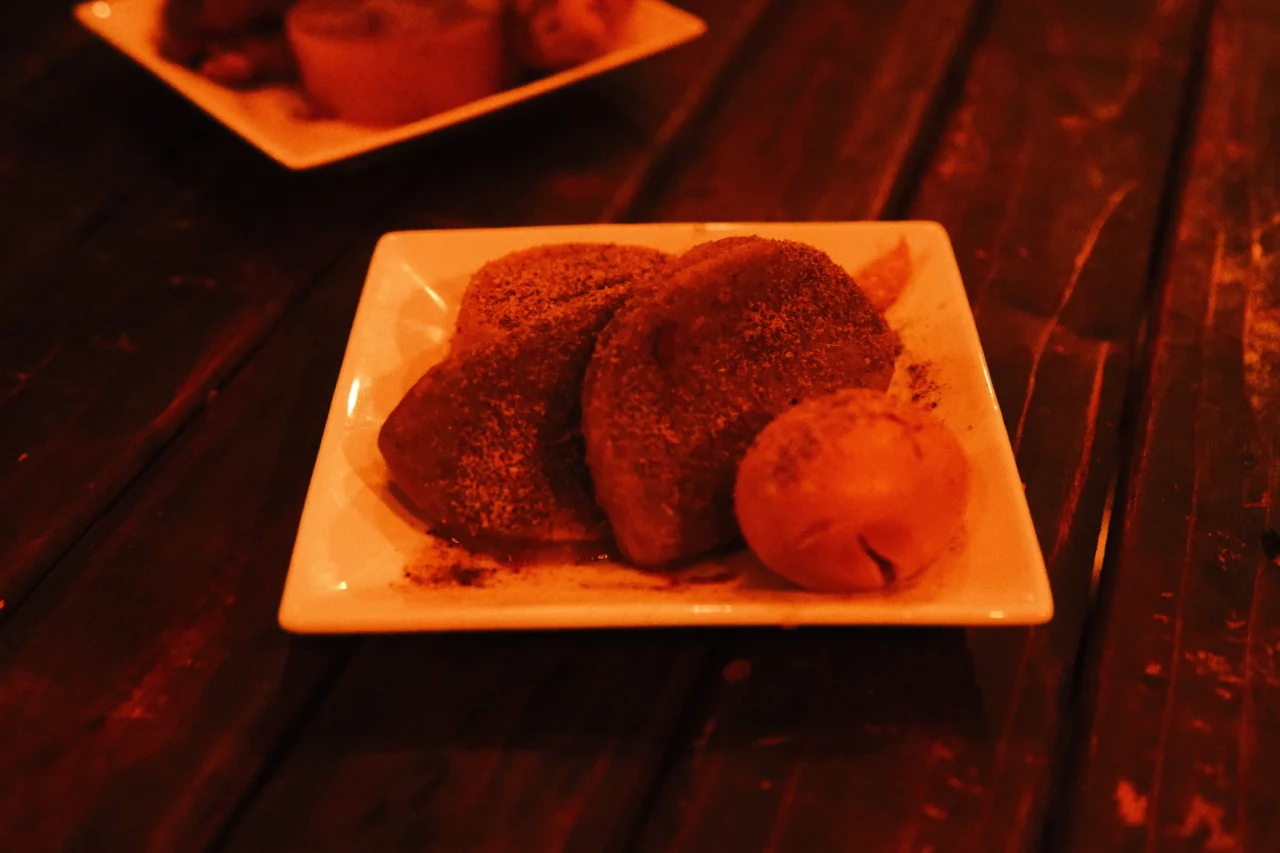
The interior of the bar was filled with a peaceful and warm atmosphere, accompanied by the sounds of Ozaken, which only heightened the sense of bliss. The owner, Kurogome, was quite the lively person, serving us Amami Oshima black sugar shochu and vodka. As we enjoyed our drinks, we chatted away, laughing and saying things like, “Wow!”
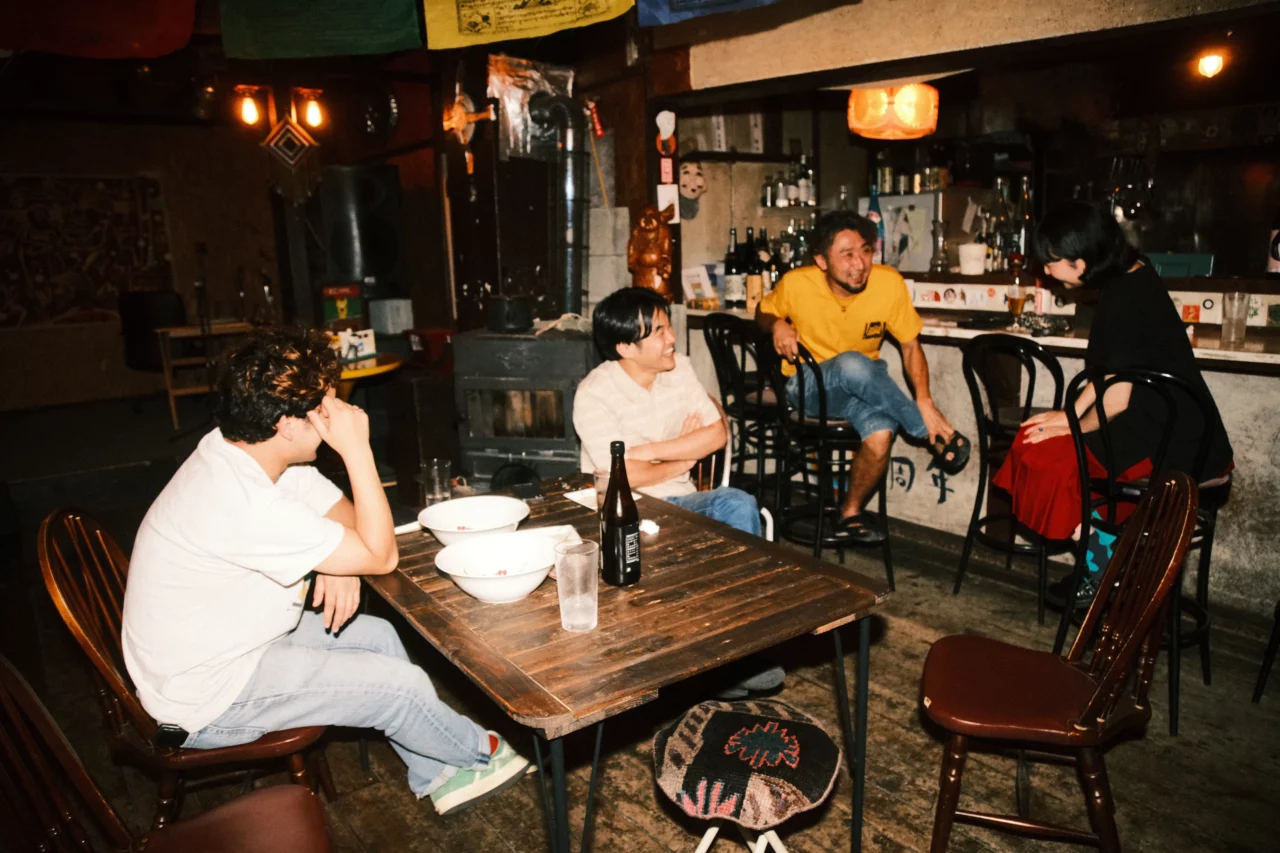
“My friend recently mentioned, ‘The Prime Minister should be the person with the most friends in Japan,’ and I thought that was quite a valid point. I don’t necessarily want to promote the idea that having many friends makes someone better, though.”
“Still, politicians really do need to have the qualities of a good party organizer.”
With that, we continued our aimless conversation at the izakaya, covering topics like politics, music, and friendships. Kato shared a story about when NOT WONK performed with ZAZEN BOYS.
“After our set, I went to greet them in the green room, and Mukai Hidetaka said, ‘I can hear the sound of a Les Paul that I’ve listened to on records my whole life.’ That was all he said, but I thought it was an incredible compliment.”
At this point, I had already had quite a bit to drink, and Kato, who had been out until 2 AM the night before, had likely consumed twice as much as I had. We decided to head to another izakaya, but to our surprise, it was closed for the day. We stood there, frustrated, stomping our feet in front of the locked door. Damn it! Everyone I had talked to that day had praised the place and said the food was amazing, so not being able to go there at this moment was especially disappointing.

In our disappointment, we decided to explore a side street off the main road, where we came across an alley lined with prefabricated huts and entered a kushikatsu restaurant. The elderly owner had a more relaxed demeanor than being unfriendly, and he served up some delicious kushikatsu. While enjoying our drinks—either beer or possibly a highball—we began discussing music. When I mentioned my recent fascination with J-POP, he suggested I check out Takako Okamura’s album liberte. He explained that the synth sounds and their usage perfectly captured the trendy aspects of UK rock from that era and had a connection to the legendary band The Wake, which featured Bobby Gillespie. He also shared insights about Ken Hirai’s “KISS OF LIFE,” noting its impressive two-step beat, along with a few other recommendations.

INDEX
bar BASE
We left the kushikatsu restaurant and made our way to bar BASE, the DJ bar where we would conclude our night. The ambiance was subdued with dim lighting, giving it the feel of a cozy, hidden spot, but the sound quality was astonishingly impressive.

The volume was impressive, and standing close to the speakers felt almost like being in a club, yet it was still easy to carry on a conversation. This brought to mind the legendary Paradise Garage in New York, where guests could chat in the middle of the dance floor, no matter how loud the music was. Truly excellent sound doesn’t impede communication. You could either relax at the bar and chat or dance near the speakers, engaging with the music in your own way. As I sipped my coffee shochu, I shared with Kato just how much I had enjoyed the day. He smiled broadly and nodded in agreement several times.

“There’s a natural flow from day to night to morning, you know? You start with coffee during the day, then enjoy dinner and drinks at night, and dance until the morning. All the places we went to today have strong connections and a friendly atmosphere, but each one has its own distinct vibe, so it never feels monotonous.”
“Yeah, I think I finally grasped why you’ve chosen to stay in Tomakomai. It’s really quite simple: everything you need is right here in your hometown.”
“Exactly! You don’t have to go to Tokyo; this is more than enough! I could happily do this forever”

Despite appearing completely sober, Kato-kun was in a great mood as he discussed the music scene in Tomakomai. He mentioned that Tomakomai has its own solid and independent scene, distinct from places like Sapporo. He also pointed out that in the 1990s, there was a strong connection with the punk scene in Kitami. As I listened to Kato-kun speak so passionately, I couldn’t help but think, “He truly takes pride in his hometown.”
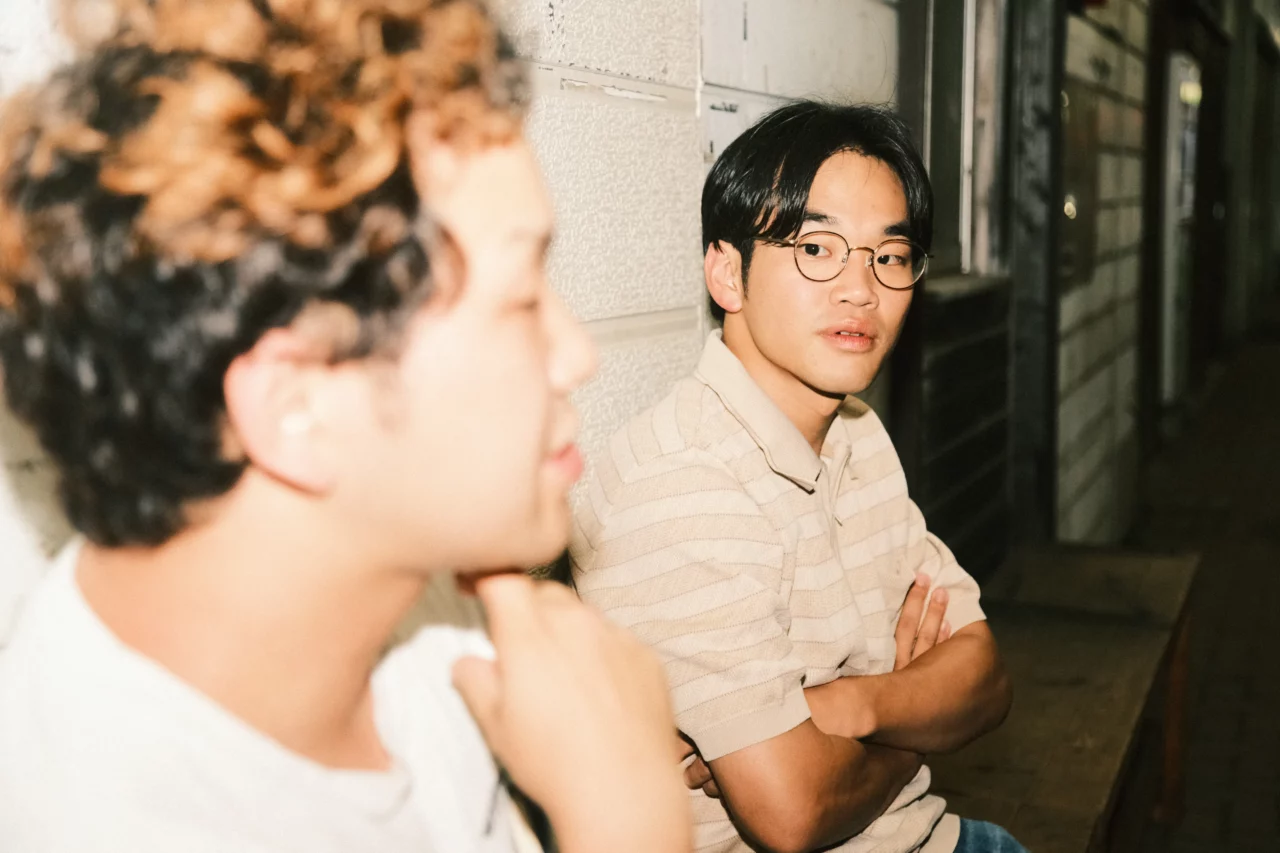
Hokkaido bands often get oversimplified with just one label: “Hokkaido.” People might casually remark, “It has that Hokkaido vibe,” or something similar. Some even view Sapporo as the heart of the alternative scene, seeing other areas merely as followers or offshoots. However, as I noted before, Hokkaido genuinely feels like its own country, with distinct differences in climate and culture across regions. Just as Glasgow and Manchester are vastly different, Sapporo and Tomakomai are also unique. Kato-kun voices his discomfort with the idea of being grouped under the “Hokkaido” label or having Sapporo and Tomakomai mixed together in conversations. This expresses a “Don’t underestimate us” mentality. Those who take pride in their hometowns typically carry this mindset. Every music scene is influenced by such attitudes. Kato-kun’s comments conveyed a strong sentiment of, “What does Tokyo have over us? What’s Sapporo even about? I’m all about Tomakomai!” (Though he likely wouldn’t phrase it quite that way).

The time I spent at BASE was absolutely amazing. When the cover of ANA MAZZATTI’s “FEEL LIKE MAKIN’ LOVE” started playing, I felt overwhelmingly happy—so happy that I thought I could be at peace even if I were to die right there and then.

That day, a young guest from overseas happened to be celebrating his birthday, which led to a charming moment when a surprise birthday cake was brought out. I couldn’t help but laugh when Kato dashed out of the bar the moment the DJ spun an early NOT WONK track. He returned with a bashful grin and said, “Honestly, the bass sounds so weak now; it’s embarrassing!” However, when THE BLUE HEARTS’ “Kiss Shite Hoshii” started playing, we wasted no time rushing back inside to dance. The lyrics, “How far will we go tonight? Will we stay right here forever?” felt like a perfect reflection of our own situation, making us laugh even harder. Hiroto Kohmoto always keeps it real in his music.

Just before 3 AM, I dragged my weary, alcohol-soaked body outside. Kato kindly guided me to the guesthouse run by ELLCUBE. Along the way, we spotted a barbecue happening in front of Standing Drink King, so we popped in to say hi, and before I knew it, I was downing another beer. It was late, and the party was in full swing, but it was a delightful moment. At the end of a great day, these bonus moments always seem to happen. After stumbling out of the bar, I finally made it to the guesthouse. It was a charming place, packed with band merchandise and equipment, with six or seven beds scattered around. Completely tipsy, I exclaimed, “I’d do anything for you, Kato!” He just chuckled. Once Kato left, I collapsed into a deep sleep, as if I had fainted.


















